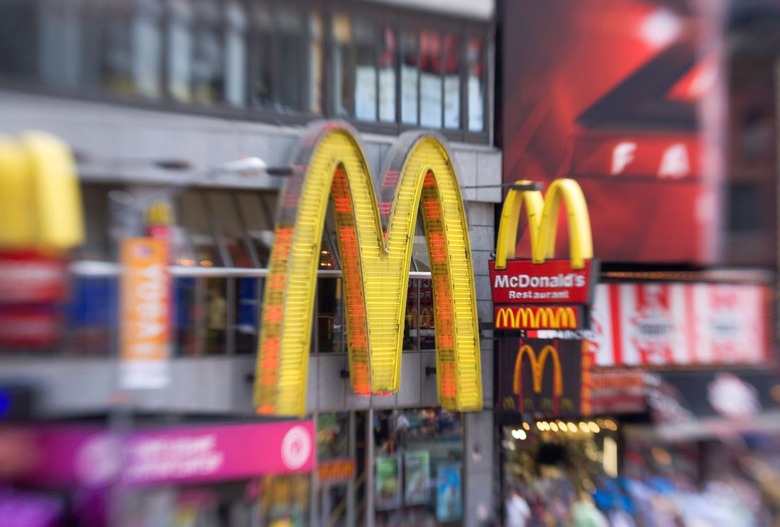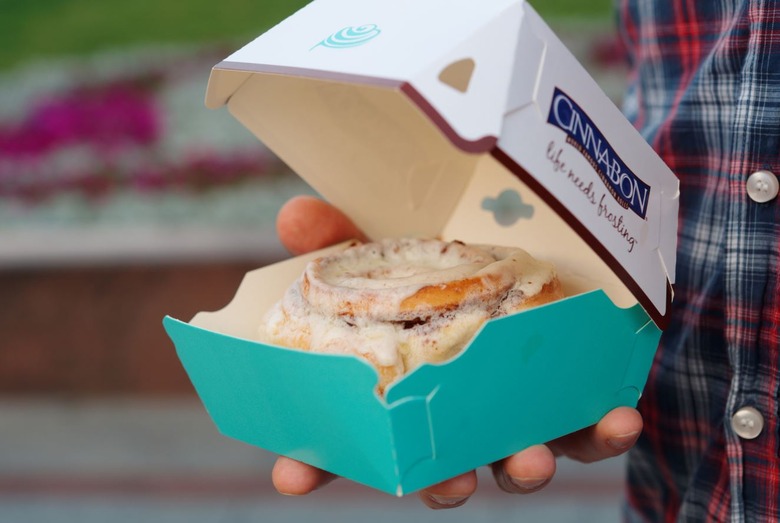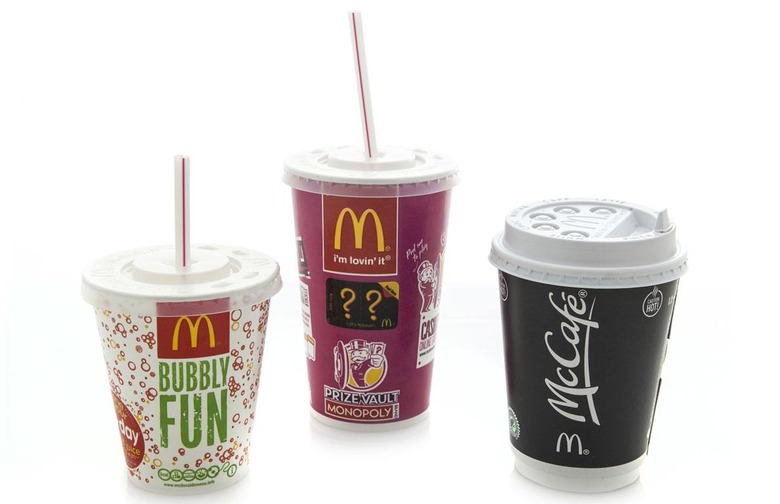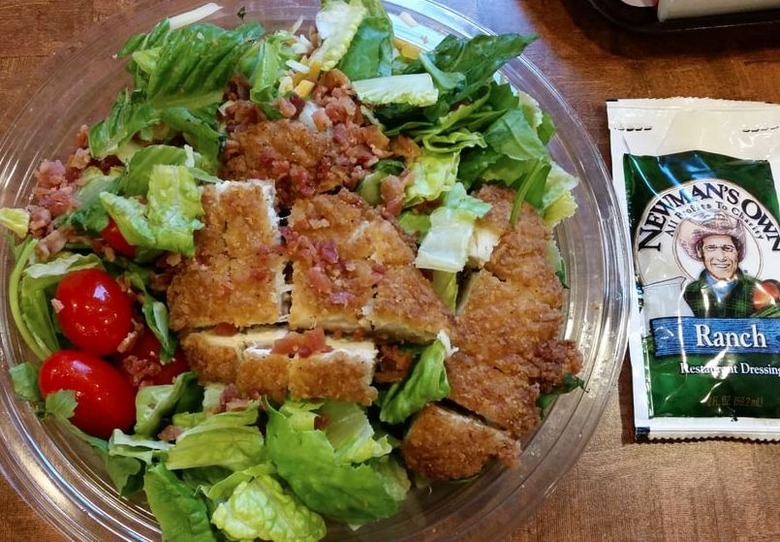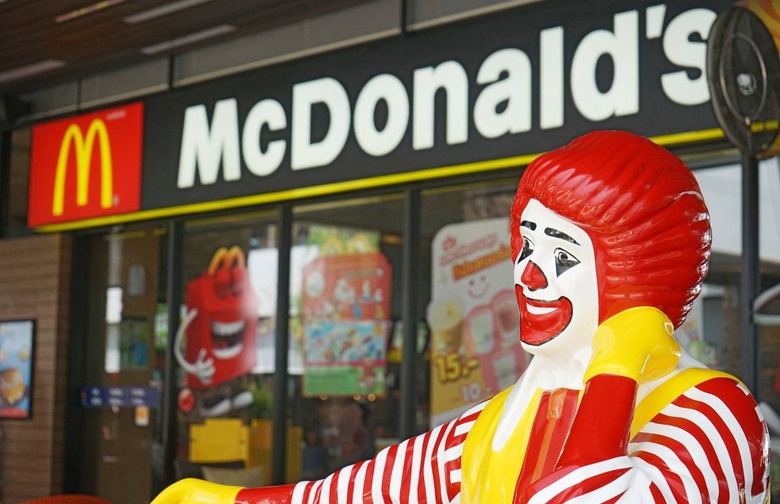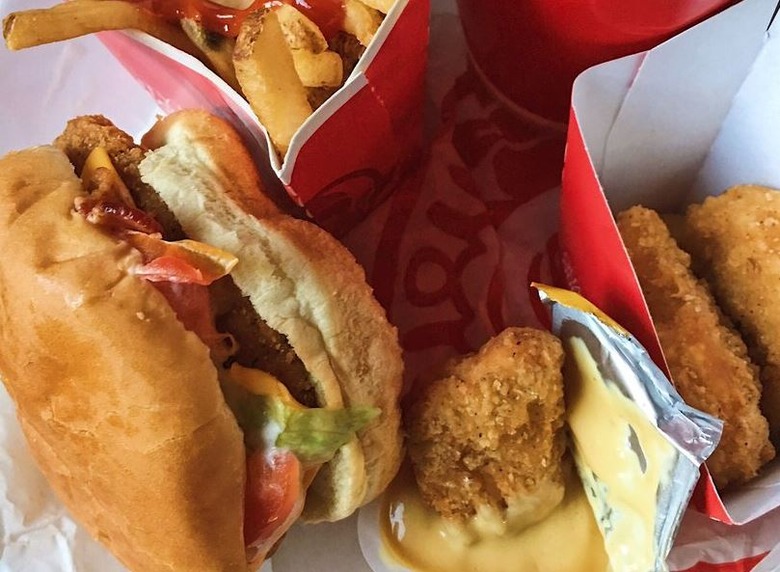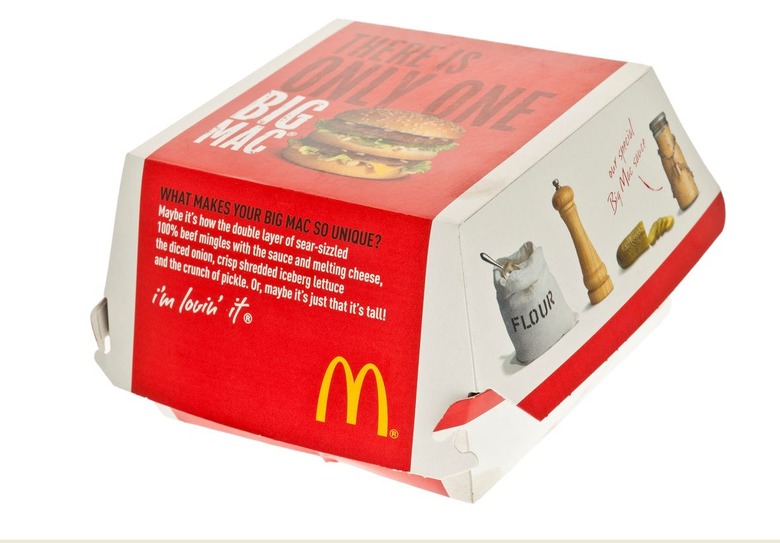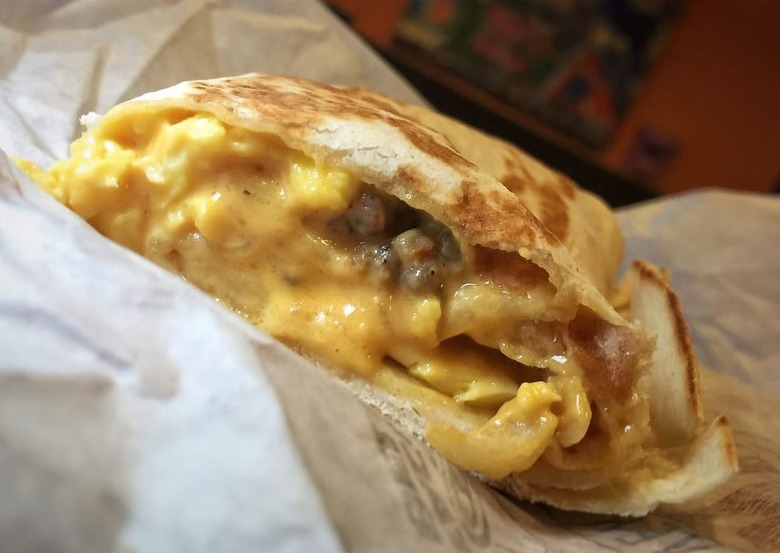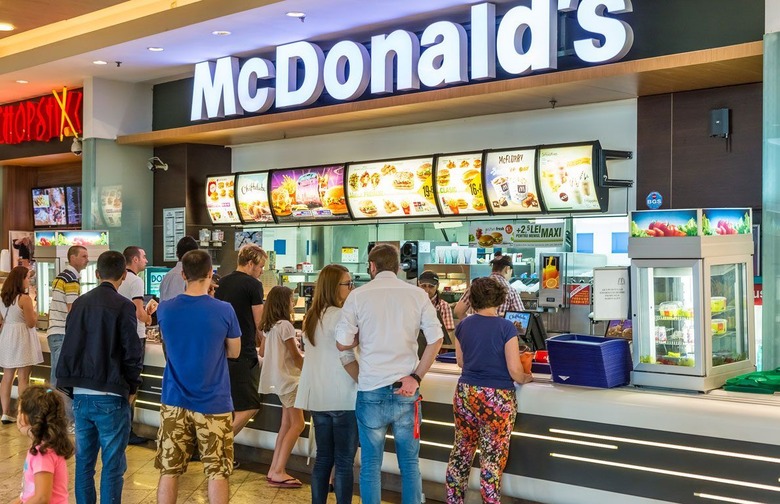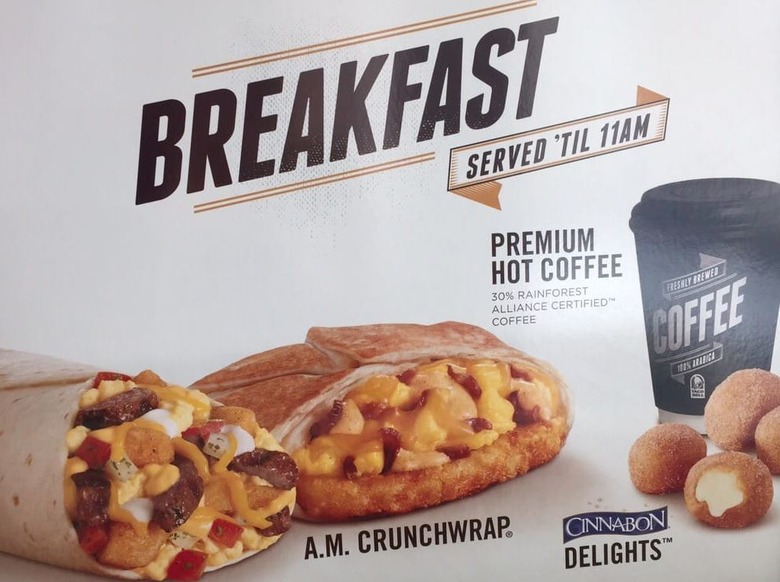10 Ways Fast Food Chains Are Playing With Your Head
It's a ritual that's pretty much engrained into the American experience by this point: We walk into a fast food joint or pull up to the drive-thru, peruse the menu for a couple minutes, place our order, receive it, and dig in. But lurking just below the surface is a clandestine operation that's hell-bent on making you spend a little more money, order a little more food and drink, and think that what you get is a little tastier and a better value than it actually is.
Yes, fast food restaurants are very, very good at playing mind games with their customers. Just look at the "Supersize" campaign that McDonald's foisted upon the American people until Morgan Spurlock took it down in 2004: For just a little bit more money you could boost the size of your drink and fries, and to many people, it sounded like a good deal. In reality, it was just a way to get customers to pay more money for something they didn't really need; it's called the upsell, and it's one of the oldest restaurant tricks in the book.
Unfortunately, the upsell is just the tip of the iceberg when it comes to fast-food mind games. Every single element of the fast-food experience, from the moment you walk through the door, to raising expectations about your meal, and hurrying you out the door once you've gotten it (yes, there's a reason McDonald's seats are uncomfortable and the music is loud and lousy), has been planned by a team of smart, cunning individuals with a single goal: maximizing profits. Read on to learn 10 ways in which fast-food restaurants are trying really hard to bend you to their whims.
That Smell
When you walk into a McDonald's or approach a Cinnabon at the mall, very distinct sense memories overtake you; namely, past experiences of walking into a McDonald's or approaching a Cinnabon at the mall. Just setting foot inside a McDonald's makes you want some of those wonderful-smelling fries or McNuggets, and the alluring smell of Cinnabon has ruined many a diet.
Inflated Drink Sizes
If you walked into a fast food restaurant 25 years ago and asked for a large soda, it would be a lot smaller than a large soda served at today's fast food establishments. The reason behind this is simple: customers don't mind spending a few extra dimes for a gigantic soda, and it costs the restaurants next to nothing.
Giant Billboards
We already know that the way fast food looks in advertisements looks almost nothing like how it looks in real life; there's no way that every Big Mac coming out of a McDonald's kitchen is the platonic ideal. But when you're driving down the interstate and you see 30 feet of a delicious-looking burger, your brain processes it as if it's much closer to you than it actually is. Before you know it, you're taking that exit without even thinking about it.
“Healthy” Salads
Planning on "just having a salad"? Some salads are definitely unhealthier than others; especially the ones that contain full-fat dressing, cheese, and/or fried chicken. While salads contain more vegetables than burgers, you'd be surprised by how high in calories and fat some of them are.
Marketing to Kids
The tastes you develop as children are the ones that stay with you your entire life, and chains know that if they can get kids hooked on their food they'll be customers for years. Hence Happy Meals and on-site playgrounds and all the subtle (and not-so-subtle) other ways that fast food chains appeal to children.
Offering Lots of Extras
Here's a novel concept: You don't really need fries with that burger. Or a soda. A Wendy's Baconator contains 940 calories and 57 grams of fat; trust us, that's more than enough food. But if you can add on fries and a soda and "make it a meal" for just a buck or so more, that sounds like a great deal, so why not? Here's an answer: You're giving them money for food that you don't need. Making it a meal is not an economical option. Saving your money is.
Adjectives, Adjectives Everywhere
What sounds more appealing to you: "Bacon, eggs, and cheese in a tortilla," or "flavorful bacon, a double portion of fluffy scrambled eggs and lots of warm, melted cheddar cheese, all wrapped up in a warm flour tortilla"? We bet it's the latter, and fast food restaurants (and regular restaurants) know it too. That copy was taken from a Mother Jones article exploring the linguistic magic of Taco Bell's breakfast menu; by appending meaningless adjectives like "flavorful," "tasty," and "delicious" to their menu items they build expectations in their customers' minds that make them more likely to order them. And there's plenty of wordplay going on, too; notice how fast food chicken is no longer "fried," now it's "crispy" or "homestyle"?
Exaggerated Portion Sizes
Notice how, in the Taco Bell example above, "a double portion" and "lots" are mentioned? Once again, it all comes down to perceived value, and whether the customer thinks he or she is getting a good deal. "Well, if it contains twice as much egg, and lots of cheese, I must be getting my money's worth!" In reality, it's just eggs and cheese.
Menu-Reading Science
There's a whole science behind studying how people read menus. By studying scanpaths, or the way our eyes move and what they fixate on when we're reading, menu planners have learned that we usually fixate on whatever's in the upper right-hand corner of a menu, be it a paper menu at a sit-down restaurant or a menu board at the drive-thru. So the next time you're at a fast food joint, pay attention to which menu item catches your eye first, and why.
Pitching Certain Dishes
Another way fast food restaurants try to direct their customers toward ordering certain menu items is by highlighting some items over others. You'll see posters all over fast-food restaurants advertising their latest release or special; they're usually more expensive than other items. Remember: order what you want, not what the restaurant wants you to want. These are just a handful of all the crazy secrets your favoite fast food chains don't want you to know.
More From The Daily Meal:
25 Things You Didn't Know About Your Favorite Fast Food Chains
How Fast Food Has Changed Since You Were in High School
Regional Fast Food Chains We Wish Were National
